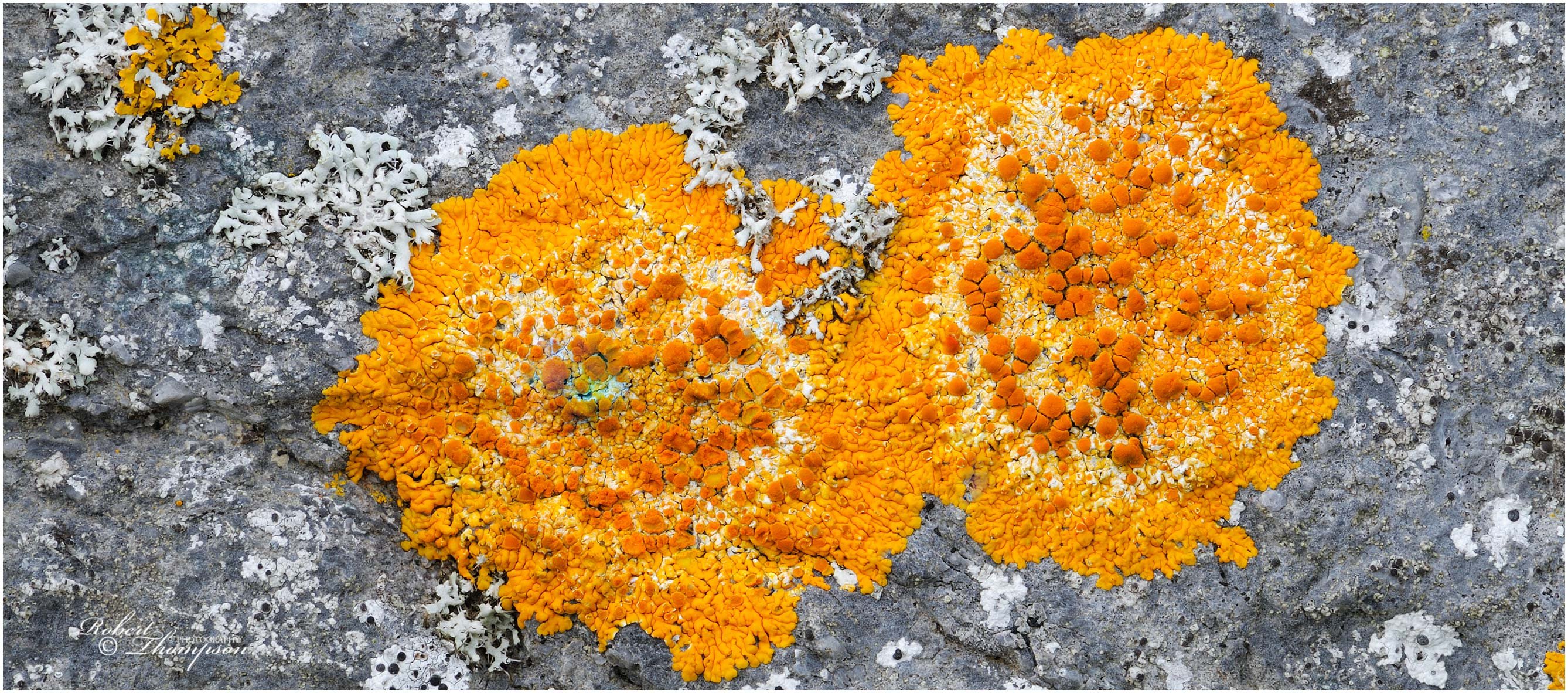LICHENIRELAND
LichenIreland
INTRODUCTION
Lichens are amongst the most commonplace, yet unusual, organisms you are likely to encounter. They are the patchworks of colour that you see on many weathered rocks and churchyard headstones.
WHAT ARE LICHENS
Lichens have developed a uniquely successful partnership. They are a compound organism in which a fungus (called the mycobiont) exists together in symbiosis with an alga and/or cyanobacteria (called the photobiont, because it is capable of photosynthesises). Together each combination forms a stable, identifiable entity, in which both organisms benefit from their association. The algal and/or cyanobacterial cells are protected from drying out by the enveloping fungi, which also provides attachment to the various substrates. In return, the fungus receives nutrients from the alga, in the form of sugar made by photosynthesis. This is a highly successful partnership that stems back millions of years. Many lichens are also sensitive to pollution and are important biomonitors, of the health of our environment. They grow in some of the most unlikely places and manage to survive in the most inhospitable places on earth.
Lichens are at their best during the winter months when the trees are devoid of leaves and the moisture level in the air is higher. Many species have a real colourful vibrancy to them at this time of the year, particularly after rain. The larger eye-catching species form patchworks of colour on rocks and decorate the trunks and branches of trees and gravestones. They also have many other applications and are used in medicines, perfumes and as dyes to colour wool and other fabrics. They are also an important food source for terrestrial molluscs (snails and slugs) and many insects including the larvae of some moths. There are over 1700 species of lichen described in the British Isles and probably many more awaiting identification and discovery.
The LichenIreland website is hosted by the National Museums Northern Ireland. To go the LichenIreland website click here

